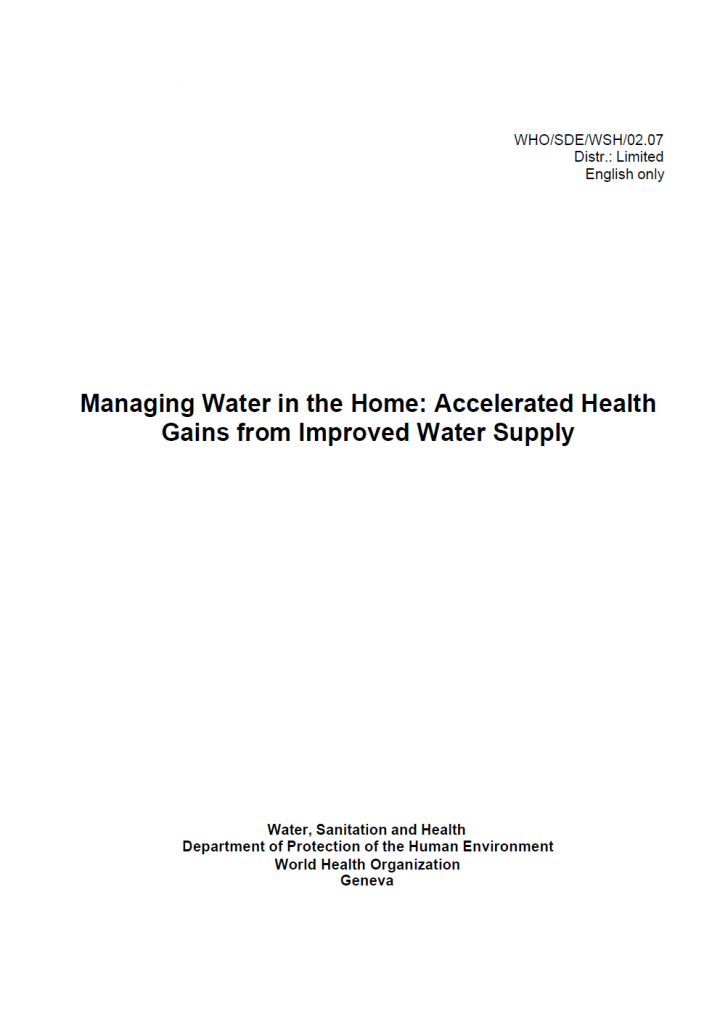Managing Water in the Home: Accelerated Health Gains from Improved Water Supply
Sobsey, M. D. (2002)

Published in: 2002
Pages: 82
Publisher:
WHO
Author:
Sobsey, M. D.
Uploaded by:
SuSanA Admin
Partner profile:
common upload
803 Views
5 Downloads
A large fraction of the World's population around 1.1 billion people - does not have access to improved sources of water. For many others, contamination of water during transport and in the household presents a significant health risk. For this segment of the world's population, use of effective technologies for household water treatment and storage is likely to have direct beneficial effects in the form of reduced infectious diseases and also contribute to greater productivity and other associated benefits from improved health. Household treatment often can provide these benefits to underserved populations much more quickly than it will take to design, install and deliver piped community water supplies.
Identifying the most accessible and effective methods for household water storage and treatment are matters of considerable importance and are the subject of this report. The purpose of this report is to critically review the various candidate technologies and systems for providing microbiologically improved household water and to identify the most promising ones based on their technical characteristics and performance criteria. The characteristics and performance criteria for these are: effectiveness in improving and maintaining microbial water
quality, reducing waterborne infectious disease, technical difficulty or simplicity, accessibility, cost, socio-cultural acceptability, sustainability and potential for dissemination.
This critical review considers methods and systems to protect water during storage, collection and use that improve microbial quality and thereby reduce pathogen exposure and risks of diarrheal and other waterborne diseases. Because it has been repeatedly demonstrated and is generally accepted that the most important and immediate risks to human health from using contaminated drinking water are those from enteric microbes of fecal origin or other sources, this review focuses on strategies and systems to protect and improve the microbiological quality of household water to prevent and control waterborne microbial diseases.
Bibliographic information
Sobsey, M. D. (2002). Managing Water in the Home: Accelerated Health Gains from Improved Water Supply. WHO
Filter tags
English














